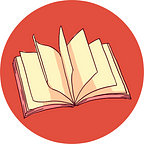Calligraphy- the beauty of letters
By- Rahila, Palak, Divyanka
From the moment humans began speaking, they have expressed their emotions and sounds in gestures. For decades people used to write with whatever tools they had, like scratch, sharp objects, coloured substances of vegetables and flowers as ink, etc. Writing down the motions came as a prolongation of gesturing- a channel to make gestures worth memorable or likely to be remembered.
Calligraphy is an art in itself. In the era of growing technology, it’s keeping you to roots to preserve tradition and culture. Writing can be therapeutic, always having a positive psychological effect on the writer. Writing down in diaries and taking notes of a day is similar to meditation. Self-care creates a space in your life through calligraphy.
Origin
Calligraphy means beautiful writing and comes from the Greek “καλλιγραφία” words “beauty” (Kallos) and “to write” (graphein).
The origin of calligraphy is associated chiefly with China, but different calligraphies
originated in various countries worldwide. In East Asian countries, China, Vietnam, Korea, and Japan, calligraphy arises from pictograms and ideographs on animal bones and shells. Eventually, this writing gave way to Chinese ink brushes and writing on paper. Artists recognized that the ink brush, paper’s water absorption, density of the ink, and other factors all had a hand in the final result of the work.
Even though calligraphy originated differently worldwide, printing resulted in a decline in these traditional styles. This art began a revival in the late 19th century, thanks to Edward Johnston and his handbook entitled “Writing & Illuminating, & Lettering.”
“Calligraphy, a spiritual art that has been forgotten in favor of an emotionless keyboard.”― Stefan Boldisor
Types of calligraphy
Modern and traditional calligraphy are the two main types today. While traditional calligraphy refers to the slanted font written in a straight line, modern calligraphy gives artists much more freedom to experiment.
- Traditional calligraphy
Traditional calligraphy comes in various hands, such as Copperplate and Spencerian. All these come with their own set of rules. If practicing copperplate, try pens with flexible nibs that ideally allow thick and thin lines.
- Modern calligraphy
When the digital era came, calligraphy became a lost art. People could use paintbrushes, brush pens, or stylus. It is possible to do faux calligraphy with any regular pen or pencil. Online tutorials and apps like procreate made it easy to learn calligraphy.
Art is being transformed by technology today, and calligraphy is no exception. The practitioners say some changes are welcome, but some questionable moves must be avoided.
It’s an aesthetically pleasing way to create something beautiful for others. A calligraphy is a form of meditation that enables gratitude and connecting with others with a handwritten touch.
Considering all this, in a progressively digital society, more people than ever are embracing calligraphy’s real beauty. What can be done by hand cannot be replaced by digital equipment. Practice all different types of calligraphy with different kinds of pens and brushes. And one day, you will find the one which suits you the best.
“After all, there’s nothing quite like putting pen to paper.”
Calligraphy takes you to a world where your brushes, pen, and pencils bounce up and down in a lively way and move lightly and heavily, with a bit of pressure on the page where it is making beautiful art.
Reference links:-
1.https://www.domestika.org/en/blog/9563-history-of-calligraphy-from-sacred-texts-to-internet-memes
2.https://www.deccanherald.com/special-features/calligraphy-in-modern-times-1090450.html
